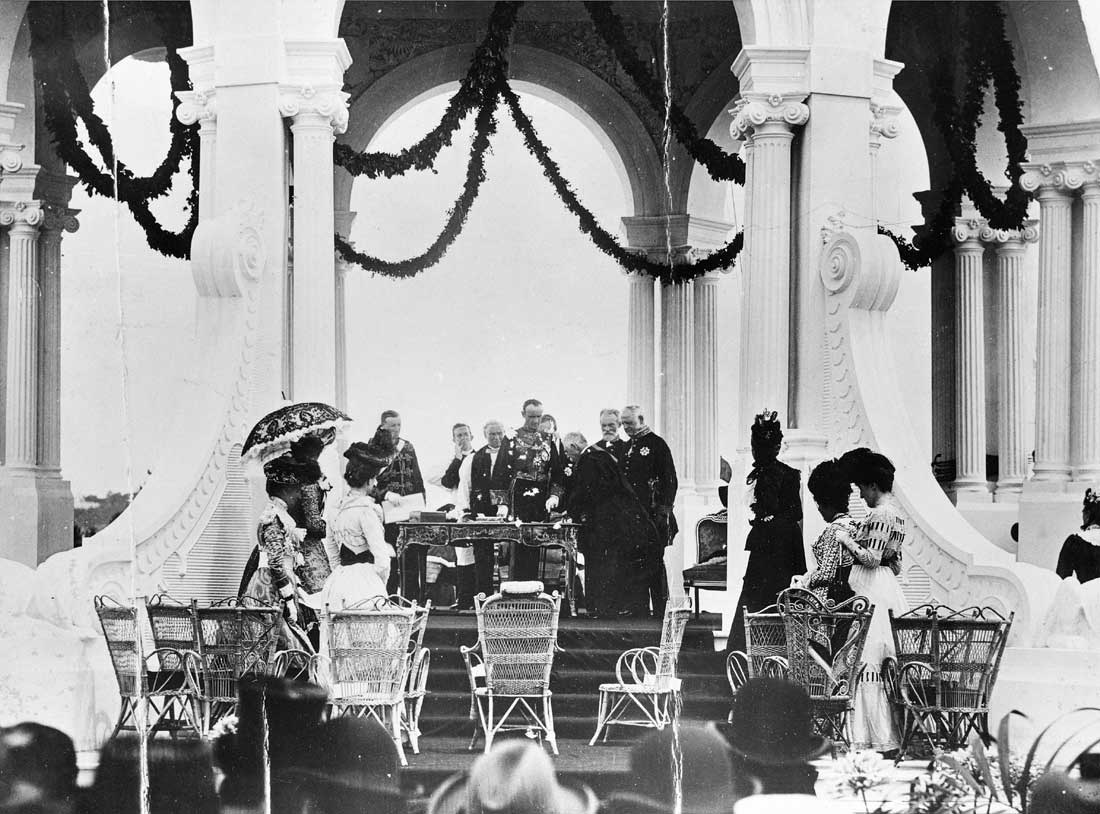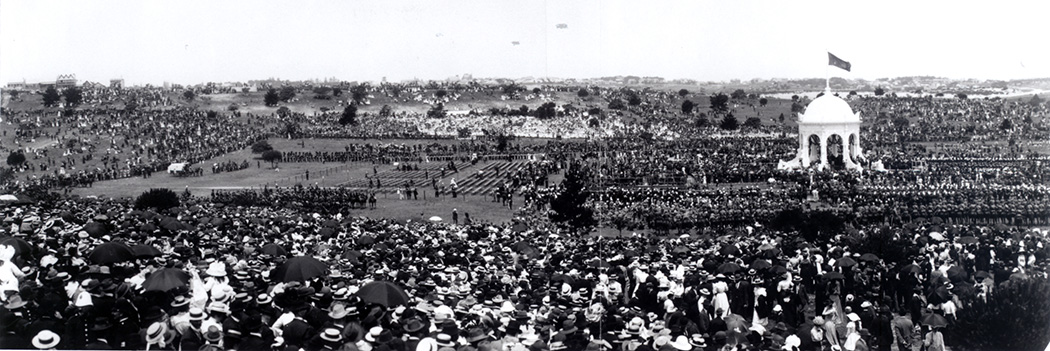Declaration of the Commonwealth
We do hereby declare that on and after the first Day of January one thousand nine hundred and one, the people of New South Wales, Victoria, South Australia, Queensland, Tasmania and Western Australia shall be united in a Federal Commonwealth under the name of the Commonwealth of Australia.Queen Victoria, Proclamation, 17 September 1900.
The Commonwealth of Australia was established on 1 January 1901, and the Australian Constitution came into effect on that date. A ceremony in Centennial Park, Sydney, formally marked the beginning of the new nation and established elements of the first Commonwealth government. The Governor-General, Lord Hopetoun, swore to faithfully serve the Queen and the Commonwealth, and proclaimed that he had taken office. He then, in the Queen's name, appointed the ministers of the first government and swore them in as members of the Executive Council.

Ceremony for the declaration of
the Commonwealth, Centennial Park,
Sydney, 1 January 1901
National Library of Australia

Panoramic view of Centennial Park, Sydney.
Celebration for the inauguration of the Australian
Commonwealth, 1 January 1901
National Library of Australia
A Cabinet of Kings
There was general agreement as to the scope of the new parliament’s legislative powers. The law-making powers defined for the federal parliament included those areas which had long been recognised as the logical responsibility of a central government—matters such as trade and commerce, defence, and immigration. Some powers were defined as exclusive powers of the federal parliament, and some were to be concurrent with the powers of the state parliaments. Many issues were decided provisionally, ‘until the parliament otherwise decides’.
Under section 87 of the Constitution, the ‘Braddon clause’, three-quarters of all revenue acquired by the Commonwealth through customs and excise was to be returned to the states, for a period of ten years after Federation. Some feared that this would result in the more populous states subsidising those with small populations.

The Barton ministry of 1 January 1901
Image Library, State Library of New South Wales
Front, from left: Edmund Barton (NSW), Minister for External Affairs; Lord Hopetoun, Governor-General; Sir William Lyne (NSW), Minister for Home Affairs. Middle row: Sir George Turner (Vic.), Treasurer; Sir Neil Lewis (Tas.), Minister without portfolio; Sir James Dickson (Qld), Minister for Defence; Alfred Deakin (Vic.), Attorney-General; A.C. Budge, Clerk of the Executive Council; Charles Kingston (SA), Minister for Trade and Customs. Back row: Sir John Forrest (WA), Postmaster-General; Richard O’Connor (NSW), Minister without portfolio